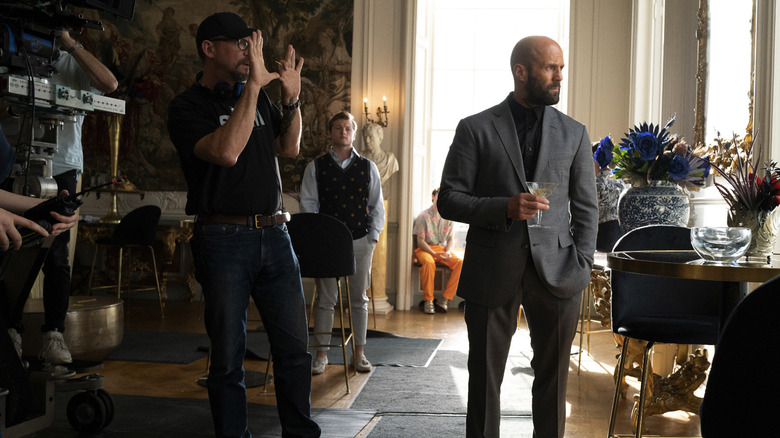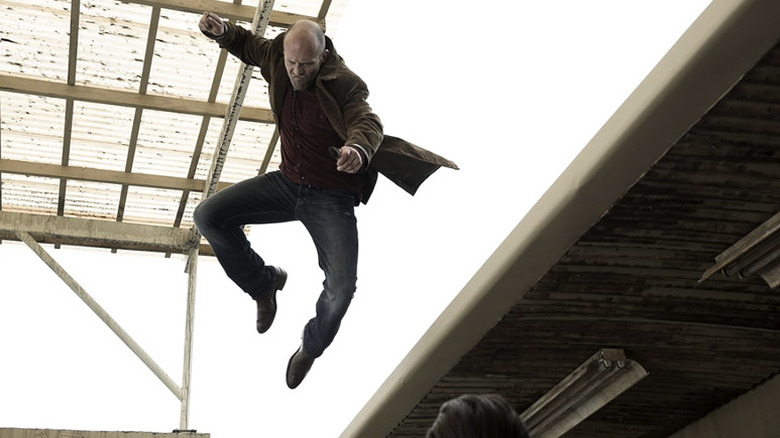Jason Statham 'Schooled' Director David Ayer On The Set Of The Beekeeper
David Ayer has been making action movies for more than 20 years. "Training Day" might still be his most famous credit as a writer, but he also has writing credits on "The Fast and The Furious," "U-571," and "S.W.A.T." and he later wrote and directed films like "End of Watch," "Fury," "Sabotage," and "Suicide Squad" (the latter of which was infamously recut by Warner Bros. before its release). With all of that experience, one might assume he'd be the one imparting advice or doling out nuggets of mastery on the set of his latest action film, "The Beekeeper." But as I learned in a recent interview with the director, Ayer is smart enough to know when to listen — especially when working with a genre superstar like Jason Statham.
"He schooled me," Ayer told me about his collaboration with Statham on their new movie. "I mean, let's be real: He's an action icon, and he's probably forgotten more about action than I know. He really raised my game. He really helped me get under the hood of, what is action? How does it work? And he has this encyclopedic knowledge of, like, literally every punch ever thrown on film. So when you present him with choreography, [he'll say], 'No, I did that in this movie, I saw that in this, I saw that in that.' And then his sense of self and how he presents on camera is impeccable, and you have to support that and then build around that. I, honestly, after working with him, feel much more confident about directing action."
Collaboration is king
David Ayer may have been a player in this genre for 20+ years, but he only has nine feature directing credits under his belt. Statham, on the other hand, has acted in over 45 live-action features, the vast majority of which are action films. When you compare the sheer amount of hours the two have spent on sets making movies, Statham blows Ayer out of the water. All of that experience has given the actor a tremendous understanding of the nuts and bolts of how to make an action scene work as effectively as possible. As Ayer explained:
"The great thing with Jason is, he can come in, look at where your camera is, look at the light, understand the choreo[graphy], and go, 'No, you need to move the camera two feet to the left.' [Imitates moving the camera] 'OK, throw the punch now? Oh, dang, that worked. Wow!' So it's helpful, in a way, because he's laser-focused on getting it right."
This type of thing isn't limited to the action genre, either. "Eileen" director William Oldroyd recently shared a similar story with me about working with Anne Hathaway, who knew exactly how to pitch her performance in that film even when Oldroyd thought it might be slightly off. But when he checked the playback, he discovered she was correct — and it was all due to that extraordinary amount of experience she's had in front of a camera. In a world where the director is often held up as the visionary who makes every decision and controls every aspect of the frame (and I'm as guilty of that type of framing as anyone), these realizations from these directors underline just how crucial trust and collaboration can be on a film set. By listening to their actors instead of merely imposing their will, these filmmakers ended up with better movies — and learned some valuable lessons in the process.

